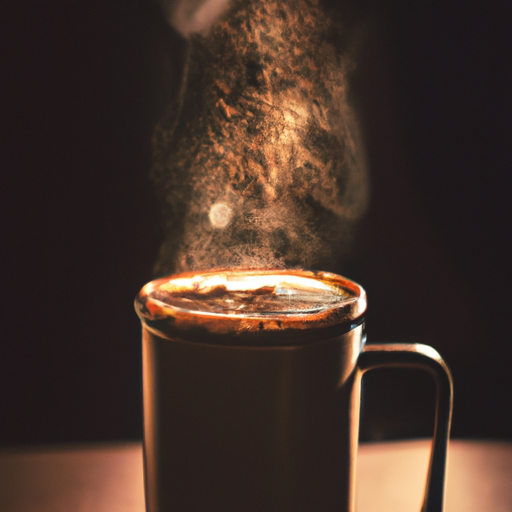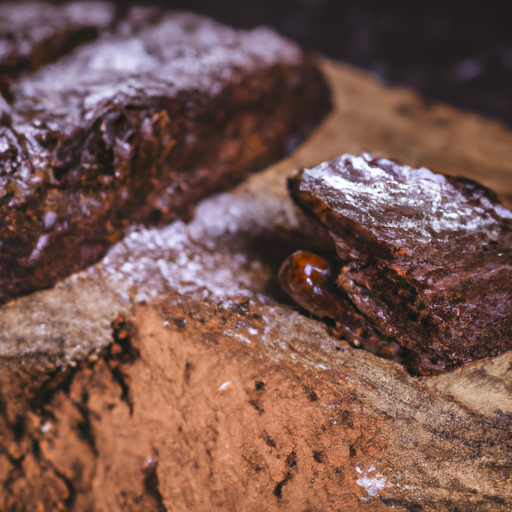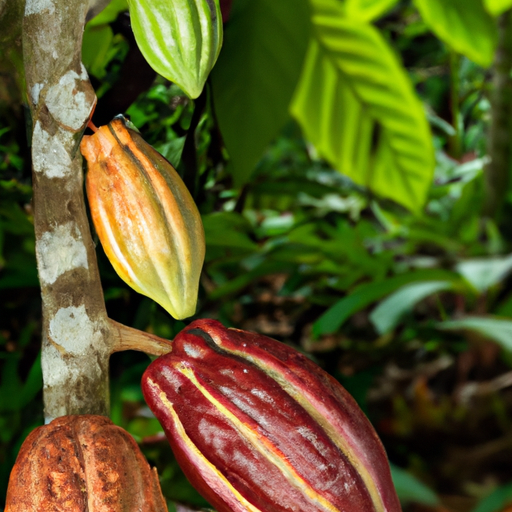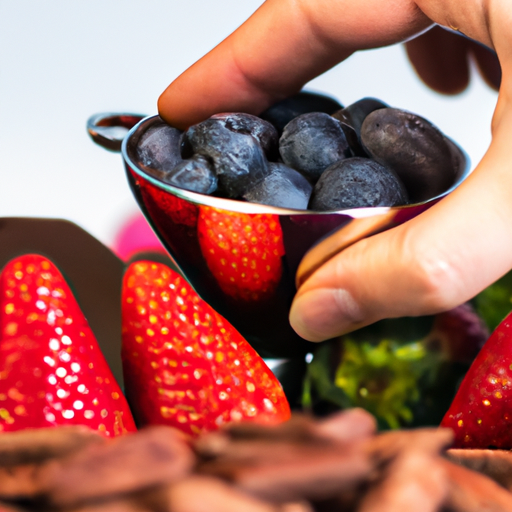Yes, were you aware that raw cacao tea is not only tasty but also full of health benefits? I was pleasantly surprised to learn that one serving of this delightful drink has more antioxidants than a serving of green tea or a glass of red wine.
As a fan of both chocolate and tea, I couldn’t resist trying out this unique and invigorating drink. In this article, I will guide you through the simple process of making your own raw cacao tea at home. From gathering the ingredients to adding the perfect amount of sweetener and flavorings, I will provide you with step-by-step instructions to ensure a perfect cup every time.
So, if you’re ready to indulge in a warm and comforting drink that not only satisfies your chocolate cravings but also boosts your health, let’s get started!
Key Takeaways
- Spices such as cinnamon, nutmeg, and cardamom can be added to enhance the flavor of raw cacao tea.
- Sweeteners like honey and maple syrup can help balance the bitterness of raw cacao tea, but should be used sparingly.
- Vanilla extract can provide a subtle and pleasant flavor to raw cacao tea.
- Adding citrus zest, such as orange or lemon, can give raw cacao tea a refreshing and bright taste.
Introduction to Raw Cacao Tea
So, you’re ready to dive into the world of raw cacao tea, huh? Well, you’re in for a delicious and nutritious treat!
Raw cacao tea is made from the purest form of chocolate, without any added sugars or preservatives. One of the key benefits of drinking raw cacao tea is its high antioxidant content, which can help boost your immune system and fight against free radicals in the body.
Additionally, raw cacao tea is known to enhance mood and promote feelings of relaxation.
There are different ways to enjoy raw cacao tea. You can steep the cacao nibs in hot water for a traditional tea, blend them with milk for a creamy hot chocolate, or even use them in smoothies and desserts.
Now that you know the benefits and ways to enjoy it, let’s move on to gathering the ingredients for this delightful beverage.
Gather the Ingredients
First, gather all the necessary ingredients for this deliciously rich and aromatic beverage. To make raw cacao tea, choose the best cacao powder available. Look for organic, minimally processed cacao powder that is free from additives. This ensures the highest quality and most nutritious cacao powder.
Drinking cacao tea daily has numerous benefits for your health. It’s packed with antioxidants, which can help reduce inflammation and protect against oxidative stress. Cacao tea is also a natural mood booster, thanks to its high content of theobromine, a compound known for its mood-enhancing properties. Additionally, it can improve cardiovascular health and boost brain function.
Now that you have gathered the best cacao powder, it’s time to move on to the next step of preparing the cacao powder for brewing the perfect cup of raw cacao tea.
Prepare the Cacao Powder
To get started, all you need to do is prepare the exquisite cacao powder in order to brew a cup of this heavenly beverage.
There are different types of cacao powder available, but for the best results, I recommend using raw cacao powder. Raw cacao powder is made from fermented and roasted cacao beans, which are then ground into a fine powder. It retains more of the natural nutrients and antioxidants compared to processed cocoa powder.
Using raw cacao powder in your tea not only adds a rich and deep flavor, but it also provides numerous health benefits. Raw cacao powder is known to be a great source of magnesium, iron, and antioxidants, which can help boost your mood and support cardiovascular health.
Now that we have prepared the cacao powder, let’s move on to the next step and heat the water.
Heat the Water
Now, if you’re ready to indulge in a truly soothing and invigorating experience, let’s begin by heating up some water to the perfect temperature for your delectable beverage.
To make a delicious cup of raw cacao tea, it’s important to bring the water to a boiling temperature. This ensures that the cacao powder is properly dissolved and releases its rich flavors. The ideal water temperature for making cacao tea is around 212°F (100°C).
Boiling the water not only helps to extract the natural goodness of the cacao, but it also creates a comforting warmth that enhances the overall experience.
Once the water reaches the boiling point, you’re ready to mix the cacao powder and water, creating a heavenly blend that will satisfy your taste buds.
Mix the Cacao Powder and Water
Once the water has reached its boiling point, it’s time to blend the rich cacao powder with the warm liquid, creating a tantalizing elixir that will transport your taste buds to chocolate heaven.
First, make sure to use high-quality raw cacao powder for the best flavor and health benefits.
Next, slowly pour the cacao powder into the hot water while stirring continuously to avoid any clumps.
Allow the mixture to steep for a few minutes, allowing the flavors to meld together.
While waiting, think about the different ways you can incorporate cacao powder into other recipes, like smoothies, baked goods, or even homemade chocolate bars.
Additionally, consider the health benefits of drinking herbal teas, such as improved digestion, reduced inflammation, and increased antioxidant intake.
Now that the cacao powder and water have combined, it’s time to move on to the next step of adding sweetener and flavorings to enhance the taste of your homemade cacao tea.
Add Sweetener and Flavorings
As you pour in a touch of honey or a sprinkle of cinnamon, your taste buds will dance with delight, elevating the rich and velvety flavors of this indulgent elixir. Adding a sweetener and flavorings to your raw cacao tea can enhance its taste and create a delightful experience.
There are different types of sweeteners and flavorings you can use, depending on your preferences. For sweetness, you can try using honey, maple syrup, or coconut sugar. These natural sweeteners complement the bitterness of the cacao powder.
If you prefer a hint of spice, adding a sprinkle of cinnamon or a dash of vanilla extract can add depth to the flavor profile.
When it comes to sweeteners and flavorings, it’s important to choose high-quality ingredients. Some recommended brands for cacao powder and sweeteners include Navitas Organics, Terrasoul Superfoods, and Wholesome Sweeteners. These brands are known for their organic and sustainably sourced products.
After you’ve added your desired sweetener and flavorings, it’s time to move on to the next step of straining and serving the tea.
Strain and Serve
Pouring the velvety elixir through a fine mesh strainer, the rich flavors intertwine with the sweetener and flavorings, creating a harmonious symphony of taste that is ready to be savored.
Straining the raw cacao tea is an essential step to ensure a smooth and enjoyable drinking experience. By removing any bits of cacao or other solids, the resulting liquid is free from any unwanted texture or residue.
Once strained, the tea can be served in a variety of ways. Some popular serving suggestions include adding a dash of cinnamon or a dollop of whipped cream for an extra touch of indulgence.
Now that the raw cacao tea is strained and ready to go, let’s explore the health benefits of this delightful beverage.
Health Benefits of Raw Cacao Tea
Discover the incredible health benefits of sipping on this decadent elixir, as you indulge in the velvety goodness of a cup of raw cacao tea.
Raw cacao tea boasts an impressive nutritional profile, making it a fantastic addition to your daily routine. It is rich in essential minerals like magnesium, iron, and potassium, which are crucial for various bodily functions.
Additionally, raw cacao tea is packed with antioxidants, such as flavanols and polyphenols, which help protect against oxidative stress and inflammation. These antioxidants have been linked to numerous health benefits, including improved heart health, reduced risk of chronic diseases, and enhanced cognitive function.
Incorporating raw cacao tea into your diet can provide you with an array of nutrients and antioxidants that support overall well-being.
Transitioning into the subsequent section about variations and enhancements, let’s explore different ways to elevate the flavors of this nourishing beverage.
Variations and Enhancements
To truly elevate the flavors of this nourishing beverage, you can experiment with different additions and enhancements. Here are a few ideas to consider:
-
Adding spices: Cinnamon, nutmeg, or cardamom can add warm and aromatic notes to the tea, complementing the natural bitterness of raw cacao and adding depth to the flavor profile.
-
Sweeteners: Natural sweeteners like honey or maple syrup can help balance the bitterness of raw cacao while adding a touch of sweetness. However, it’s important to use them sparingly to maintain the health benefits of the tea.
-
Vanilla extract: A few drops of vanilla extract can lend a subtle and pleasant flavor to the tea.
-
Citrus zest: Adding a twist of citrus zest, such as orange or lemon, can provide a refreshing and bright flavor to the tea.
By experimenting with these additions, you can enhance and personalize the flavor of raw cacao tea to suit your individual preferences.
Frequently Asked Questions
Can raw cacao tea be made with milk instead of water?
Yes, raw cacao tea can be made with milk instead of water. It adds a creamy texture and enhances the flavor. Additionally, raw cacao tea with milk provides added calcium, protein, and vitamins, boosting its nutritional benefits.
How long does raw cacao tea stay fresh after it is prepared?
The shelf life of prepared raw cacao tea is typically 3-4 days when stored in the refrigerator. To maintain freshness, store it in an airtight container.
Can raw cacao tea be served cold or is it only consumed hot?
Raw cacao tea can be served cold or hot, depending on personal preference. Both options offer the health benefits of raw cacao, such as antioxidants and minerals. It’s a delicious and nutritious beverage to enjoy either way.
Is it possible to add spices like cinnamon or nutmeg to raw cacao tea?
Yes, adding spices like cinnamon or nutmeg to raw cacao tea is possible. These spices not only enhance the flavor, but also offer numerous health benefits, such as antioxidant properties and improved digestion.
Can raw cacao tea be consumed by individuals with caffeine sensitivity?
Individuals with caffeine sensitivity can consume raw cacao tea as an alternative to caffeinated beverages. It offers many health benefits, such as being rich in antioxidants and minerals, promoting heart health, and boosting mood and cognitive function.
Is Cacao Tea and Cacao Drink the Same Thing?
Cacao tea and cacao drink are not the same thing. While cacao tea is made from the husks of the cacao bean, the cacao drink is made from the raw cacao itself. There are many raw cacao drink recipes available online for those who want to try making their own at home.
Conclusion
In conclusion, indulging in the exquisite pleasure of crafting the velvety elixir known as raw cacao tea promises to be a delightful endeavor. By delicately combining the finest ingredients, one can unlock a symphony of flavors that tantalize the senses.
This ancient beverage, steeped in tradition and cherished for its health-enhancing properties, offers a respite from the mundane. So, why not embark on this enchanting journey and savor the subtle nuances of this ambrosial concoction?
The possibilities are as boundless as the imagination itself.










